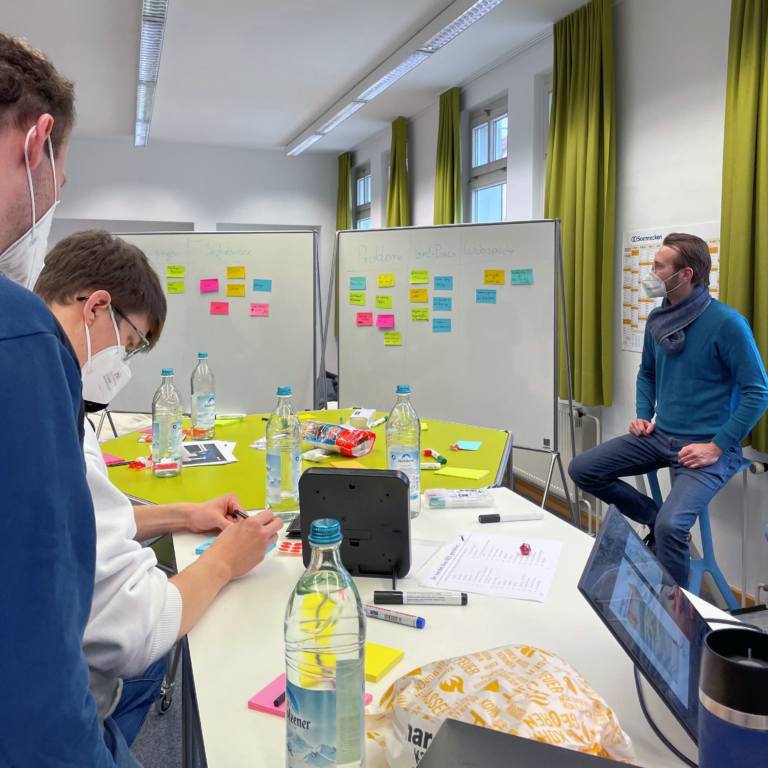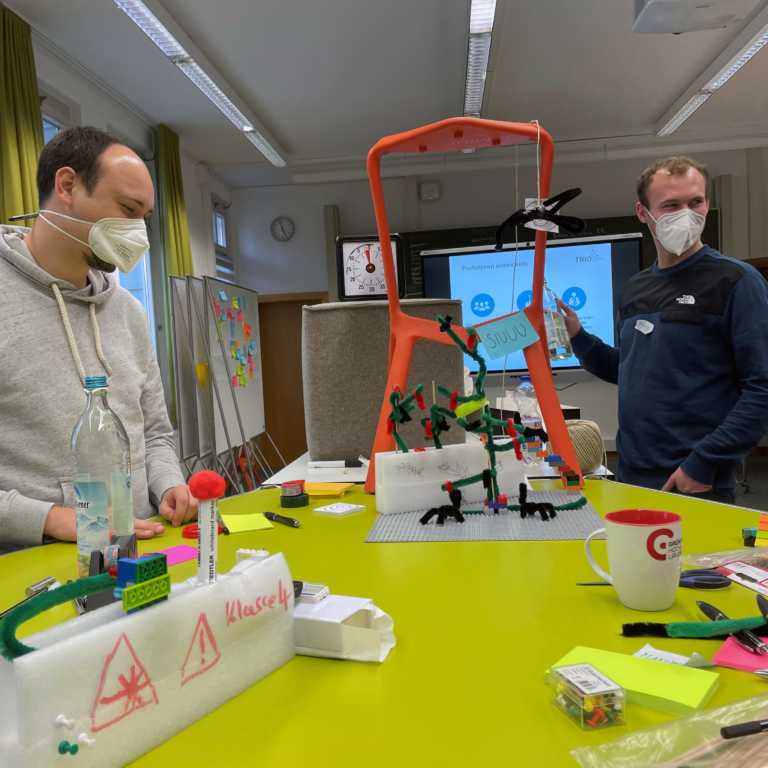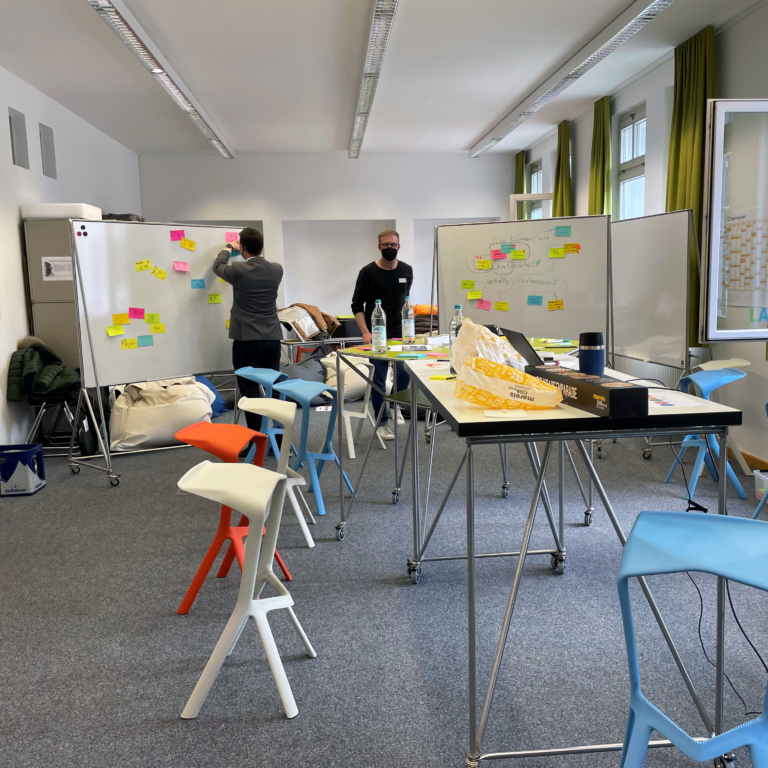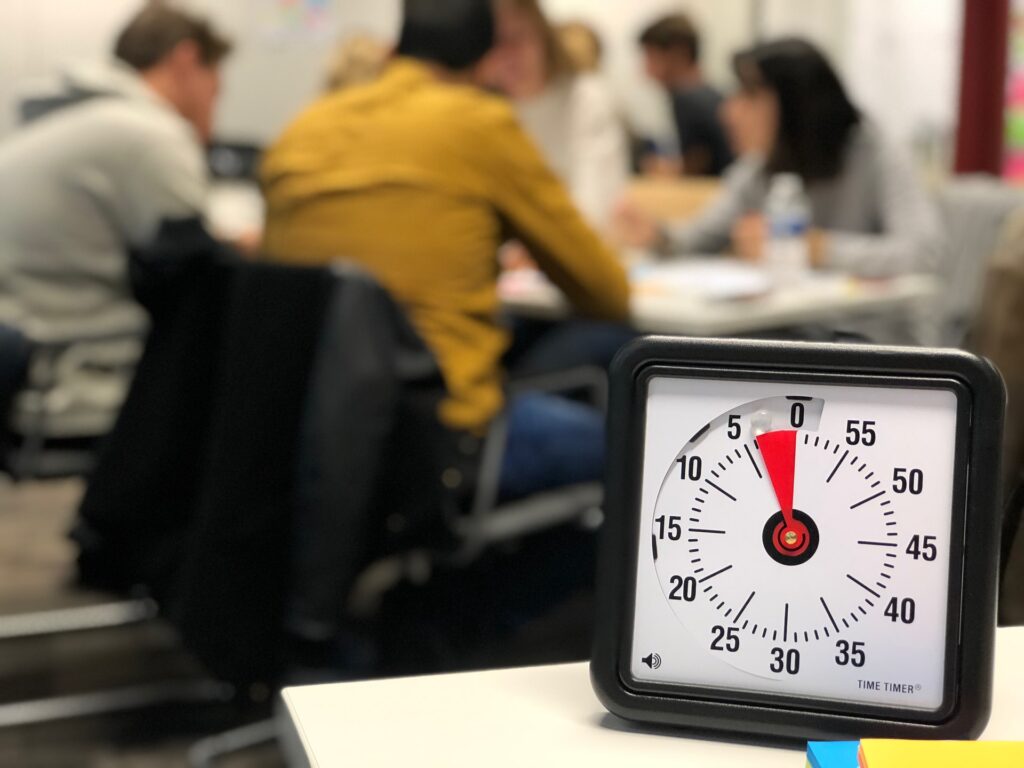
ringbach visits design thinking workshop
- No Comments
“Solve complex problems quickly and develop new ideas!”
Design thinking is a customer-oriented and iterative method to implement this. With this method it is possible to develop a good solution while weighing economic viability, feasibility and desirability. We participated in a Design Thinking workshop ourselves on February 11 and learned how to use this method to approach and solve problems. In the following blog post, you’ll learn the basics of design thinking and what the six phases of the design thinking method are all about, which we were able to learn about both theoretically and practically in the course of our workshop.
- Multidisciplinary teams
- Variable spac
- Design Thinking Process
Design Thinking Process
The design thinking process is the core of the design thinking method and usually consists of six phases. During the process, one passes through the problem space and the solution space:
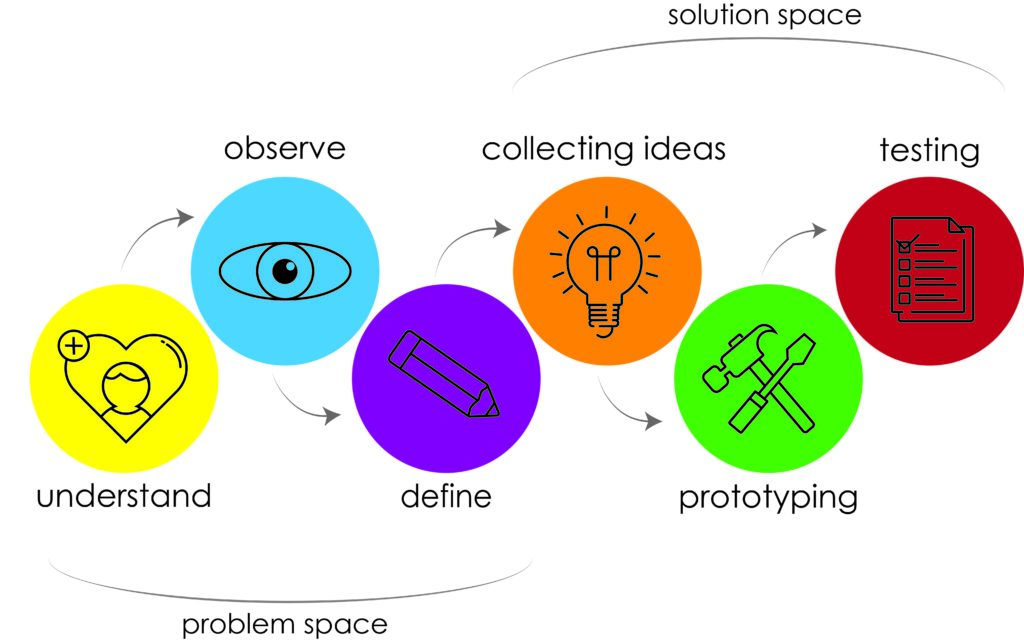
Phase 1: Understanding
The first step is to define the initial situation so that all people involved have a common understanding. The goal of the first phase is to define the problem and stake out the solution space. A common understanding of the problem is the foundation for further action.
Phase 2: Observing
In this phase, the focus is on analyzing and understanding the needs and priorities of your customers. That is, you are primarily an observer and listener, trying to find out which of the assumptions and thoughts are confirmed from the previous phase.
Phase 3: Define
In the third phase, the previous two steps are put together. The goal is to develop a conceptual framework based on the assumptions and observations gathered, which will delineate the solution space and define your ideal customer.
Phase 4: Finding ideas
In this step, ideas are developed to solve the problem of the defined target group. First, ideas are collected without evaluation, and then they are evaluated and prioritized.
Phase 5: Prototypes
In the fifth phase, creativity and craftsmanship are required. There are no limits to the imagination when it comes to the choice of materials for the prototype. The only important thing is that the prototype gives the customer the chance to empathize with the solution.
Phase 6: Testing
In the last phase, the prototype is presented to the customer. Before that, however, you should formulate assumptions and expectations under which conditions the prototype can be considered a success. The most important goal in this phase is to get feedback from one or more customers.
After the 6th phase, the Design Thinking method comes full circle. Either you jump back to the beginning from here, because you have gained important insights only in the last phase, or small changes are sufficient to successfully implement the solution.
Where can Design Thinking be applied?
Due to its structured process model for the most diverse questions and problem areas, Design Thinking can be applied in many areas. You can implement Design Thinking directly in practice or you can get to know Design Thinking in a workshop like we did.
